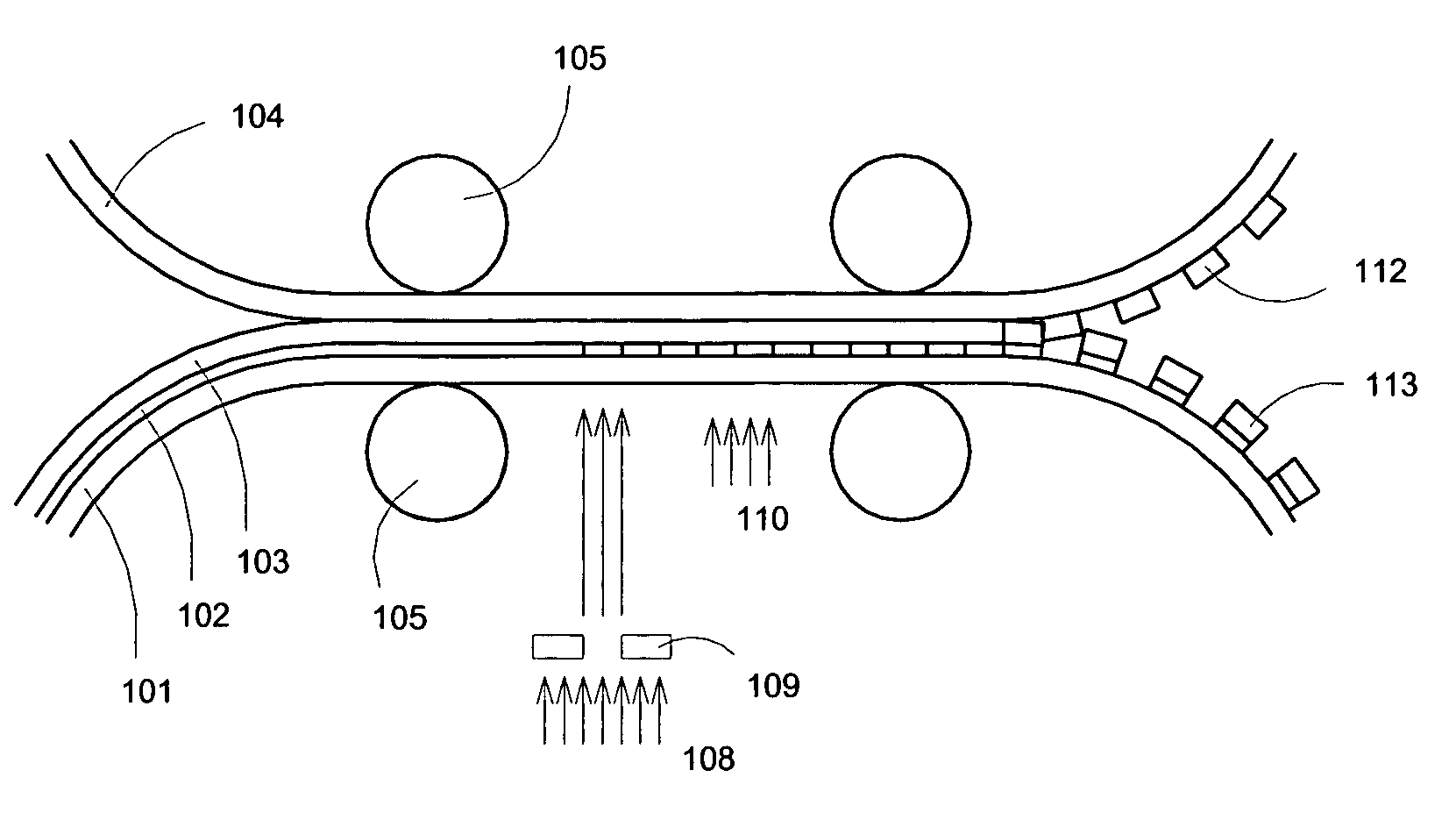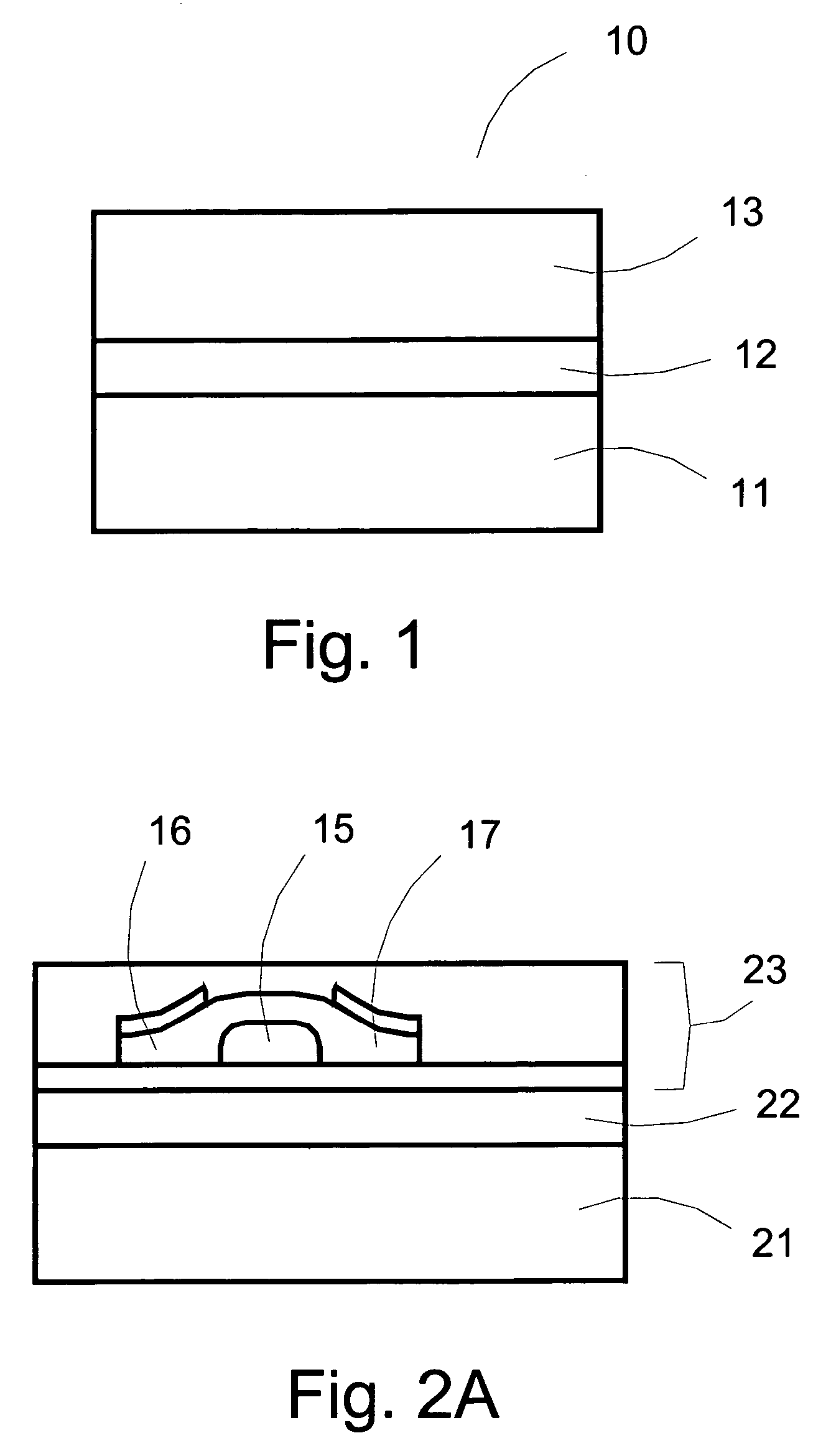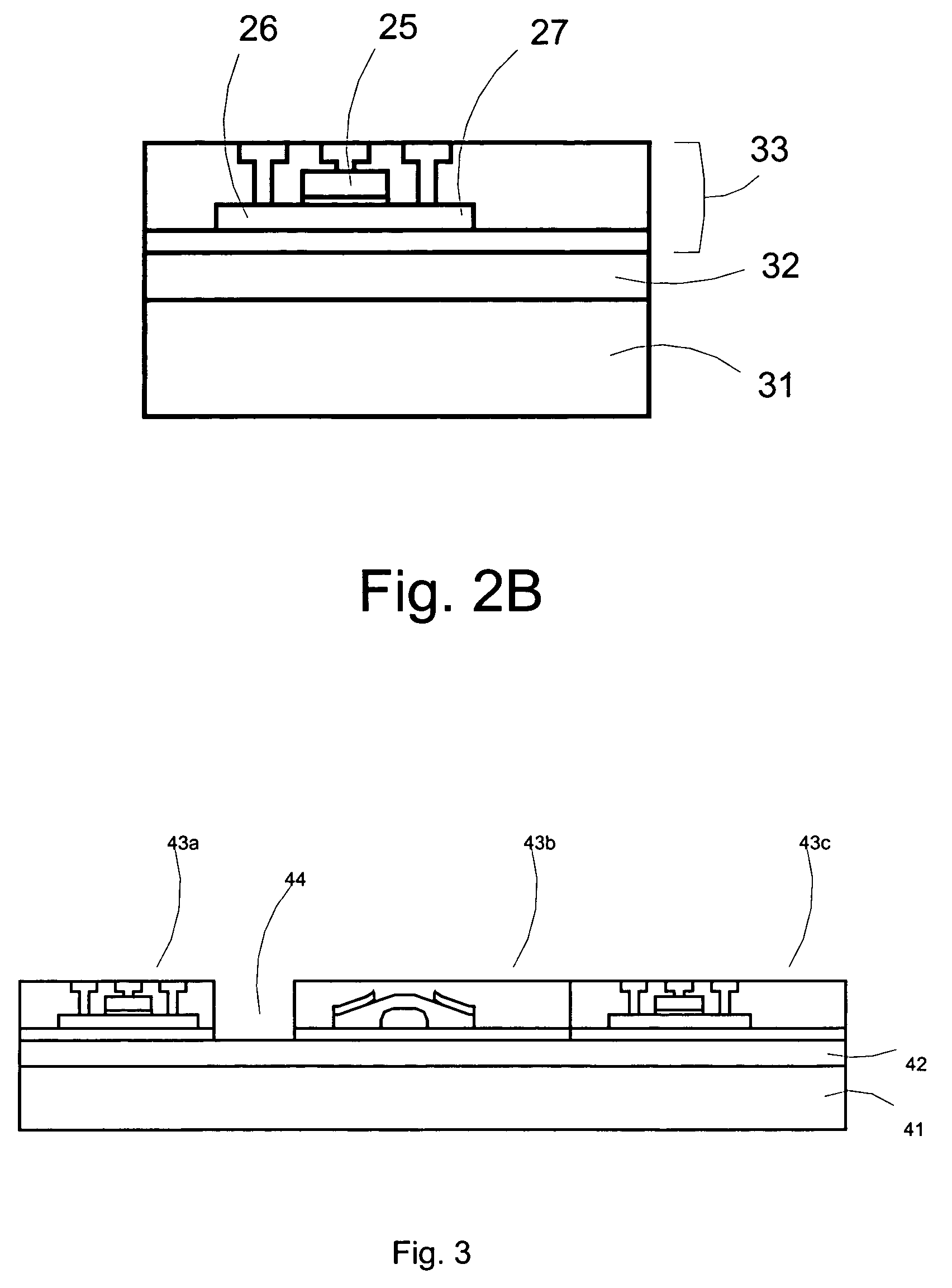Lamination and delamination technique for thin film processing
a thin film and delamination technology, applied in the direction of diffusion transfer process, pulse technique, instruments, etc., can solve the problems of high water absorption, less than ideal thermal and mechanical properties, high cost, etc., and achieve excellent mechanical stability and good adhesion
- Summary
- Abstract
- Description
- Claims
- Application Information
AI Technical Summary
Benefits of technology
Problems solved by technology
Method used
Image
Examples
Embodiment Construction
[0029]The present invention lamination-transfer, or lamination-delamination, or simply transfer process offers a solution to the mismatching substrate problem between the requirements of a substrate for fabrication processes and the characteristics desirable for a product substrate.
[0030]The disclosed transfer process involves the following steps: Semiconducting or other thin film devices with fine patterns are fabricated on a substrate with the desired optimal properties for fabrication that has been first coated with a suitable releasable adhesion layer. Subsequently, a second substrate with the desired properties for the target use of the fabricated semiconductor device is laminated onto the top of the devices. A trigger process is used to separate the devices from the fabrication substrate resulting in the semiconductor devices being attached to the second substrate. This process may be used with either finished devices (typically multilayer in construction), or with individual ...
PUM
| Property | Measurement | Unit |
|---|---|---|
| heat resistance | aaaaa | aaaaa |
| temperatures | aaaaa | aaaaa |
| temperatures | aaaaa | aaaaa |
Abstract
Description
Claims
Application Information
 Login to View More
Login to View More - R&D
- Intellectual Property
- Life Sciences
- Materials
- Tech Scout
- Unparalleled Data Quality
- Higher Quality Content
- 60% Fewer Hallucinations
Browse by: Latest US Patents, China's latest patents, Technical Efficacy Thesaurus, Application Domain, Technology Topic, Popular Technical Reports.
© 2025 PatSnap. All rights reserved.Legal|Privacy policy|Modern Slavery Act Transparency Statement|Sitemap|About US| Contact US: help@patsnap.com



